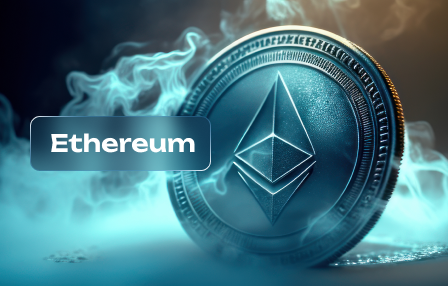Hot vs Cold Wallets – Which One Should You Use?
May 4, 2025
For effective cryptocurrency management, understanding the differences between hot and cold wallets is critical. If your focus is on frequent transactions, a hot wallet offers immediate access and convenience. However, this comes with increased risk due to its constant connection to the internet, making it more vulnerable to security breaches.
On the other hand, cold wallets provide superior security through offline storage. This method significantly reduces exposure to hacking attempts but sacrifices ease of access for daily transactions. For long-term storage of significant amounts of cryptocurrency, cold wallets are advisable as they minimize potential risks associated with online threats.
Your choice should align with your trading habits and security needs. If you engage in regular transactions or trading, a hot wallet may serve you better; however, for larger holdings that require robust security measures, opt for a cold wallet. Balancing accessibility and safety is key in determining the right wallet for your cryptocurrency assets.
Hot Wallets vs Cold Wallets: Which One to Choose
For frequent transactions, hot wallets offer immediate access and are ideal for active traders. They allow quick management of assets but come with higher risks due to their online nature. If security is paramount, especially for long-term storage, cold wallets provide a robust solution. Their offline status significantly reduces exposure to hacking and theft.
Consider the following table to weigh the pros and cons of each wallet type:
Your choice should align with your trading frequency and risk tolerance. For routine use, opt for hot wallets; for securing larger amounts over time, cold wallets are recommended.
Security Features Comparison
When deciding between hot and cold wallets for cryptocurrency storage, consider the following security aspects:
- Access Control: Hot wallets provide easier access for transactions due to their online nature. However, this convenience increases exposure to potential hacks. Cold wallets, being offline, significantly reduce unauthorized access risks.
- Encryption Standards: Most reputable hot wallets utilize high-level encryption protocols to secure user data and private keys. In contrast, cold wallets often rely on physical security measures and hardware-based encryption, which can be more robust against digital threats.
- Transaction Security: Hot wallets may incorporate two-factor authentication (2FA) or multi-signature options to enhance transaction security. Cold wallets usually require physical presence and manual input for transactions, adding an additional layer of security.
- Backup Options: Hot wallet providers typically offer cloud-based backups but depend on third-party services. Cold wallets allow users to create backups through seed phrases or recovery keys stored offline, reducing reliance on external systems.
- Risk Assessment: Evaluate your risk tolerance. If frequent transactions are necessary, a hot wallet might suffice but be aware of the higher risk of cyberattacks. For long-term storage with minimal access needs, opt for a cold wallet to mitigate risks significantly.
Selecting the appropriate wallet type hinges on balancing accessibility with the desired level of security in cryptocurrency management.
User Accessibility and Convenience
Choose hot wallets for quick access to cryptocurrency transactions and seamless management. These wallets operate online, allowing users to execute trades and transfers instantly. Their user-friendly interfaces cater to both beginners and experienced traders, making daily interactions with digital assets straightforward.
Cold wallets provide robust security but sacrifice immediate accessibility. While they are ideal for long-term storage of significant amounts of cryptocurrency, retrieving funds can be cumbersome due to the manual process involved in connecting them to a device for transactions. This delay can hinder timely trading decisions or emergency access to funds.
For those prioritizing convenience, hot wallets often support multiple cryptocurrencies and integrate with exchanges, enhancing transaction ease. Consider mobile applications that allow on-the-go access, but remain vigilant about potential security risks associated with online connectivity.
Cold storage options excel in protecting assets from hacking attempts but require thoughtful management strategies. Users should ensure backup methods are secure and easily retrievable when needed, as the inconvenience can become an obstacle during market volatility.
Ultimately, your choice between hot and cold wallets should reflect your individual needs for accessibility versus security. Assess your trading frequency and risk tolerance carefully before making a decision.
Best Use Cases for Each
Hot wallets are ideal for frequent transactions and quick access to cryptocurrency. They suit traders who need to manage their assets actively, allowing immediate buying or selling without delays. For users engaged in daily trading or those requiring instant liquidity, hot wallets provide the necessary convenience, despite the higher associated risks.
Cold wallets are best used for long-term storage of cryptocurrency. They offer enhanced security by keeping private keys offline, making them resistant to online threats. Investors holding significant amounts of digital assets or those not planning to transact frequently should opt for cold storage solutions. This approach minimizes exposure to potential hacks while ensuring safe management over time.
For businesses accepting cryptocurrency payments, a hybrid strategy may be beneficial. Using a hot wallet for day-to-day transactions ensures seamless customer interactions, while a cold wallet can safeguard the majority of funds against cyber threats. This balance optimizes both accessibility and security.
Cost Implications of Ownership
When selecting between hot and cold wallets, understanding the cost implications is critical. Hot wallets typically incur lower initial costs as they are often free to use and can be easily set up on various platforms. However, transaction fees may accumulate over time, especially with frequent trading or transfers. Users should factor in these operational expenses when managing their cryptocurrency.
Cold wallets, while presenting a higher upfront investment due to hardware purchases, offer long-term savings in terms of security. The risk of loss through hacks is significantly reduced, potentially saving users from costly recovery efforts or losses associated with stolen assets. Additionally, cold storage solutions often come with minimal ongoing costs unless maintenance or upgrades are needed.
Investors should assess their transaction volume and storage needs when choosing a wallet type. For those conducting regular transactions, a hot wallet may seem more economical initially but could lead to increased long-term expenses due to ongoing fees. In contrast, cold wallets might represent a larger initial expense but provide better cost management for long-term holders.
Ultimately, the decision hinges on individual financial strategies–whether prioritizing immediate accessibility at a lower cost or investing in enhanced security for better risk management over time.


